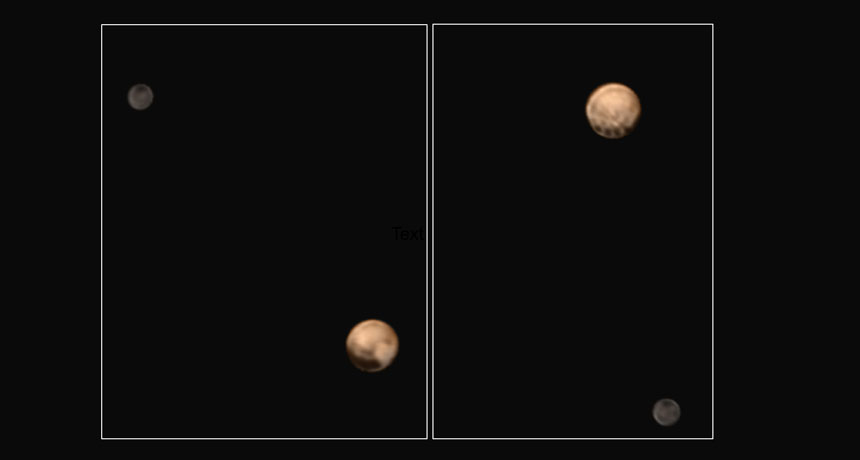Questions for ‘Visiting Pluto’

Pluto and its largest moon show off two of their sides in this pair of New Horizons photos. Each of the dark spots on Pluto (orange, right) is roughly the size of the state of Missouri.
NASA, JHUAPL, SWRI

Pluto and its largest moon show off two of their sides in this pair of New Horizons photos. Each of the dark spots on Pluto (orange, right) is roughly the size of the state of Missouri.
NASA, JHUAPL, SWRI